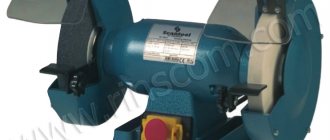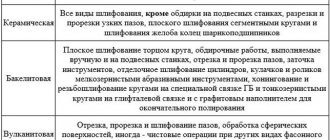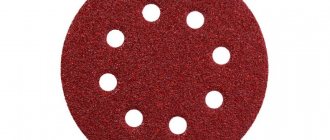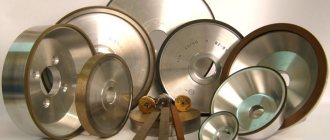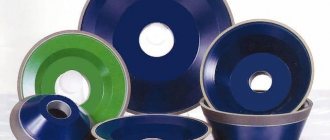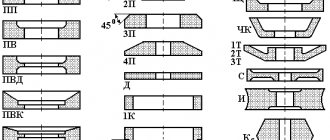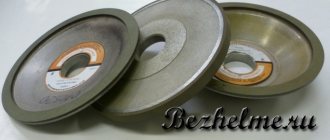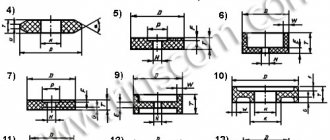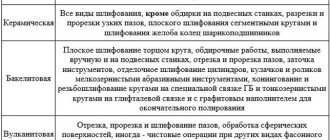Lately, grinder circles have already become an integral part of any metalworking (and not only) work. There are many reasons why they are so in demand. They are easy to use, can effectively sand a variety of materials, and are not very expensive. Moreover, unlike abrasive discs, such models perform clean cuts without any vibrations or burnouts. However, not all products are made with high quality. Therefore, the editors of the YaNashla website present a rating of the best petal circles for grinders for 2022.
Features of application
Flap wheels for grinders are used in various fields. However, they are most often used in the following cases:
- Wood processing. This unit is great for removing old paint from wooden fences. Therefore, many summer residents have them in stock.
- Edge preparation. Of course, there is a special unit for this - a chamfer remover. But when it is absent, petal circles can be used to prepare elements up to six milliliters.
- Finishing processing. Flap wheels are great for processing weld seams. It doesn’t matter what metal was used, the surface will be even and smooth.
- Removing corrosion. In this regard, flap wheels are no worse than sandblasting machines. However, you always need to select consumables so that the grains on the petals are of the required size.
When using circles, you need to monitor their condition. If you use them for other purposes, they will break very quickly. But it is worth noting that if a consumable is of poor quality, then even if used correctly it will quickly fail.
Don't forget about protective equipment. When working with tools such as an angle grinder, you should always wear gloves, a mask and safety glasses. You also need to make sure that there is good ventilation (when working indoors).
Circle grain
Petal circles are distinguished by grain size. There are several standard grain sizes - 40, 60, 80, 120. In accordance with Russian standards, the higher the number, the larger the grain diameter. According to foreign nomenclature, on the contrary, a larger number corresponds to a finer grain.
Read also: Repair of thermal relay welding master 202
When choosing a wheel, you must remember that with a high grain size, the processing will become rougher and the processed surface will be rougher.
Budget models
FIT 39554
A very high quality circle from the trusted company FIT. Ideal for processing iron and steel. It has also proven itself well in removing weld seams from metal parts. This model has a fiberglass base and aluminum oxide abrasives. The polishing will be very high quality. However, this model still does not reach the professional level. It is better to use FIT 39554 with an angle grinder. The shape of the petals is straight. Grit level – P80.
The cost of FIT 39554 is 100 rubles.
FIT 39554
Advantages:
- uneven parts can be processed;
- very low cost;
- high-quality construction;
- a lot of positive feedback.
Flaws:
- aluminum abrasives are not suitable for everything;
- not suitable for professional work.
Luga d-115x22 mm, P60 KLT
Model Luga d-115x22 mm, P60 KLT is used on a grinder to process parts made of plastic and wood. The model can also be used to work with metal. This disc performs well in removing welds, corrosion, paintwork and burrs from parts. Luga petals d-115x22 mm, P60 KLT are attached to a flexible base. The model has a high level of wear resistance and efficiency. Security is also at a high level, everything is done according to state standards.
Price Luga d-115x22 mm, P60 KLT - 300 rubles.
Luga d-115x22 mm, P60 KLT
Advantages:
- reliability;
- ease of operation;
- efficiency;
- wear resistance.
Flaws:
- deteriorates when exposed to high heat;
- the base may break under heavy loads.
Stayer 36581-125-060
This model is suitable for pre-grinding metal and wood products. In Stayer 36581-125-060, the abrasive is applied evenly using the electrostatic method. The base is soft, fabric, it allows you to process even very complex parts with curves. With the help of Stayer 36581-125-060 you can quickly and efficiently process various elements. However, the grain on this product is made of aluminum oxide, so the model is not suitable for professional work. The design of Stayer 36581-125-060 is durable and can withstand even very heavy loads. This product has good wear resistance, efficient operation, and can process a variety of materials. To produce this disc, Stayer uses modern technologies. The base is made of fiberglass mixed with resin. The design of Stayer 36581-125-060 is reinforced, so the disc is very durable. This is not so important, but this model has a very stylish design and nice colors. The product is suitable for different types of work. The abrasives are arranged in such a way that the processing speed is very fast and at the same time everything is done with high quality.
The cost of the product is only 120 rubles.
Stayer 36581-125-060
Advantages:
- quality base;
- allows you to process material quickly and efficiently.
Flaws:
- Difficult to find in stores;
- Aluminum oxide abrasives.
Marking of grinding wheels
The qualitative characteristics of abrasive wheels are regulated by GOSTs, standards and technical conditions. Each of the grinding wheels has its own marking according to the following characteristics:
- Sanding material
- Disc size
- Grain size
- Disk type
- Hardness degree
- Binder
- Instability class
- Structure
- Segments
- Optimal rotation speed
To decipher these points, it is necessary to consider the markings of grinding wheels in more detail.
Type of grinding abrasive
The most common markings of abrasive wheels by type of material are as follows:
Marking 12A, 13A, 14A, 15A, 16A: normal electrocorundum (material with high heat resistance, good adhesion to the binder, mechanically strong grains). Suitable for processing wrought iron, cast iron, steel, bronze, chrome steel.
22A, 23A, 24A, 25A: white electrocorundum (more uniform than type 14A, harder, with sharp edges, has the property of self-sharpening, provides a more uniform surface of the processed material). Used for sharpening and grinding tool steel, thin-walled parts and tools, as well as finishing and finishing.
Marking of abrasive wheels
32A, 33A, 34A: chromium electrocorundum.
37A: titanium electrocorundum.
38A: zirconium. The higher the marking, the higher the strength of the discs.
Marking 52-55C: black silicon carbide (has increased hardness compared to the previous type of abrasive, and brittleness). Used for polishing cast iron, granite, porcelain, silicon, ceramic, glass surfaces, as well as viscous aluminum, copper, rubber materials, and heat-resistant steel products.
Marking 62С,63С,64С: green silicon carbide. It differs from black in being more fragile.
Marking CBN, CBN, cubonite, borazone: has the strength of diamond, but greater heat resistance.
Marking of diamond wheels: AC2 (regular strength), AC4 (high strength), AC6 (high strength), AC32 (single crystals), AC50, ARB1, ARK4, APC3. They have the highest wear resistance, strength, and low fragility. Diamond wheels are used in processing brittle and high-hard alloys (cast iron, ceramics, silicon, optical glass), as well as finishing grinding, cutting, and sharpening carbide tools.
Grinding wheels, grit (marking)
A characteristic such as grain size determines the smoothness of the processed surface. The grain size of the grinding disc determines its wearability, the thickness of the metal layer removed in one pass, etc. The smaller the value of one grain, the smoother and cleaner the processed surface will be.
The grain size determines the marking of the discs:
- Grinding: grain size ranges from No. 200 to No. 16
- Sanding powder: №№12-4
- Micro sanding powder: M63-M14
- Fine micro-grinding powder: M10-M5.
The grain size units are given in µm. The marking of diamond grinding wheels, or more precisely, the type of their grain size, is indicated in a different way (through the fraction of the upper and lower values).
Grinding wheel grit markings
Circle size
Disc sizes are regulated by GOST 2424-75. Marking D is a numerical designation of the outer diameter, d is the inner diameter, h is the height (width). The outer diameter can vary in the range of 3-1100 mm, the inner diameter from 1.0 to 305 mm, and the height from 0.18 mm to 250 mm.
Read also: Resanta 160 and 160k differences
Instability class (imbalance)
There is a designation for four classes of imbalance (from 1 to 4), i.e. permissible values of disc deviation from static balance. The imbalance class denotes the ratio of the mass of the abrasive disc to the accuracy of its geometric shape. Therefore, often the unbalance and accuracy markings are indicated side by side. Accuracy class A is used for working on high-precision equipment, class B is more universal, AA - discs of ideal shape and geometry made of very high quality abrasive.
Structure
The density of the structure is indicated depending on the ratio of the number of abrasive grains to the volume of the disk. The more abrasive per unit volume of the grinding wheel, the denser its structure. If a tool is sharpened, a disk with a less dense structure is better able to clean the surface from material particles, creates less risk of deformation, and cools faster.
The numerical designation of the structure is as follows:
1,2,3,4 – dense structure;
5,6,7 – medium density;
Marking of grinding wheels: old and new, difference according to GOST
Until 2008, the conditional indicators of disks were regulated in accordance with GOST 2424-83. Since 2008, a new edition of GOST 2424 came into force. In 2009, marking of abrasive wheels began in a new way: modern standards for the symbol of hardness of a processing tool (GOST 52587-2006 instead of the old GOST 18118, 19202, 21323), grain size ( GOST 52381-2005 instead of GOST 3647-80), ligaments (new GOST 52588-2006).
Also, modern indicators of types of grinding wheels differ from those adopted in the USSR. The existing designation of grinding wheels is as follows (the previously used designation is indicated in parentheses):
- – cross-section of a straight profile circle (PP). Suitable for universal use
5 – straight profile with one-sided groove (PV). Used for cylindrical grinding.
7 – with two grooves (PVD)
10 – with hub and double-sided recess
6 – cylindrical cup-shaped (CC). Used for sharpening tools. 36 – with fasteners (PN)
11 – conical cup-shaped (CC)
41 – cutting disc type
4 – with a double-sided conical profile (2P)
- – type with conical profile (3P)
12.14 – disc-shaped (T,1T).
Flap grinding wheels are marked with the type, outer diameter, inner diameter, height, grit size and series of abrasive paper.
Marking by type of bundle
The bond holds the grinding grains to the base and to each other. Typically, three types of bond markings are indicated on the discs: vulcanite, ceramic and bakelite.
The first type of connective is designated as R, or the outdated designation “B”. It consists of synthetic rubber that has been subjected to a vulcanization process.
The ceramic bond is marked as V, the former name was “K”. It includes a compound of inorganic substances (clay, quartz). Its advantages are wear resistance, thermal and chemical stability, but at the same time fragility.
The bakelite bond is marked as B, formerly known as "B4" and "BU". It contains artificial resins. This is an elastic ligament, but otherwise the parameters are lower than those of a ceramic one.
Hardness indicators
The hardness indicator of a grinding wheel indicates the strength of the grains being held by the bond on the surface when the disc is exposed to the abrasive being processed.
Disc hardness designations start from very soft (BM1, BM2) to extremely hard (CHT), in the new designation the marking is carried out with letters of the English alphabet, starting from F (very soft) to Z (extremely hard).
Most often, disks of medium hardness are used, but the choice of type of degree depends on the type of work being performed, the surface of the material, and the tool itself.
Grain
According to the previously valid GOST, the marking of the degree of granularity was expressed in measuring the number of grains in a volume of 10 microns; for micro-grinding powder, these values were expressed by adding the letter “M”. The new standard establishes the designation with the letter "F" with the addition of a number that indicates the degree of grit. The larger it is, the less grain and vice versa.
Grinding flap discs are used for preliminary and final processing of products. The grain size of the wheels is from 40 to 2500, the abrasive material is zirconium and electrocorundum. The diameter of the circles is from 15 to 500 mm. High quality products ensure low vibration and high equipment performance. Show good results when processing durable materials and thin sheets, seams and internal cavities. They are used to equip hand tools and stationary equipment, for straight and angle grinders.
Middle price segment
KLT-1 36563-125-40
This product is suitable for processing metal, wood and plastic products with a grinder. With it you can grind at speeds of up to 12 thousand revolutions per minute. The petals are coated with aluminum oxide. Nevertheless, the disc can last a long time and provide high-quality grinding. The abrasive is applied evenly to the surface. The base is made of fiberglass, there is reinforcement.
The price of the product is 400 rubles.
KLT-1 36563-125-40
Advantages:
- quality materials;
- reliable design;
- efficiency;
- long service life.
Flaws:
- Aluminum oxide abrasives;
- spoils when exposed to high heat.
Makita D-28553
This is a model from a fairly popular Japanese company. Suitable for processing smooth parts. The petals are securely attached to a fiberglass base. This product is suitable for processing a variety of metals, including stainless steel, iron, non-ferrous metals and cast iron. Using Makita D-28553, enamel, paint and corrosion can be easily removed from parts. D-28553 is also often used for chamfering. The grain rating of the model is Ce80.
The cost of Makita D-28553 is 1000 rubles.
Makita D-28553
Advantages:
- nice design;
- allows you to carry out high-quality work;
- works without noise;
- can be restored if damaged.
Flaws:
- quite high price;
- not always available in stores.
Matrix 74042
The petals of this model are made in the form of rectangles, the base is fabric, the backing is made of high-quality fiberglass. Matrix 74042 is not only used with an angle grinder, but can also work together with various grinding machines. Matrix 74042 was developed specifically for processing metal parts. A very high-quality zirconium coating is used here, which is a huge plus. The petals are connected to each other with resin. Therefore, this device is very wear-resistant. Grit rating – P40.
The price of the product is 600 rubles.
Matrix 74042
Advantages:
- zirconium abrasives;
- reliability;
- efficiency.
Flaws:
- not always available in stores.
- the base may break under heavy loads.
How to properly install a disc on an angle grinder
Circles are a consumable item that must be replaced periodically. To do this, you should know how to correctly place a disc on an angle grinder. The circle is attached to the tool spindle by means of a clamping flange. To choose the right open-end wrench, you need to know what thread is on the grinder. This value is M14.
To replace the disk, you must turn off the power to the tool. The grinder spindle is secured to the front of the body using a button. When it is pressed, the stopper enters the mounting hole of the circle installed in the gearbox, thanks to which the spindle is fixed in a stationary position.
The pins of a special open-end wrench must be inserted into the holes on the pressure flange. The key is turned to the left while holding the latch until the nut moves out of place, after which it is unscrewed and removed by hand.
To replace the disk, you need to turn off the power to the grinder and unscrew the pressure flange
Helpful advice! The pressure flange is unscrewed in the direction opposite to the direction of rotation of the tool shaft.
If it is necessary to clean the internal cavity of the angle grinder casing, the lower flange is unscrewed. Contaminants are removed using a steel brush. The lower flange is put in place so that the grooves on the flange and spindle are aligned. A sealing gasket is placed on top, which will subsequently ensure easy unscrewing of the clamping nut. The new disk is installed so that the product markings face outward.
A gasket is placed on the circle. The flange is manually screwed onto the shaft and clamped with an open-end wrench no more than ¼ turn so as not to deform the disk.
Important! It is not allowed to remove the protective casing from the angle grinder, since this device will prevent the occurrence of traumatic situations in the event of a breakage of the wheel during its operation.
The pins of the special key must be inserted into the holes on the pressure flange and turned to the left
Dear models
Vulcan NORTON (63642502315)
This model is suitable for cleaning parts from paint, corrosion and varnish. Vulcan NORTON (63642502315) can be used to remove weld seams and burrs from products. The grain on the zirconium petals allows you to use Vulcan NORTON (63642502315) as efficiently as possible.
The cost of the disc is 1000 rubles.
Vulcan NORTON (63642502315)
Advantages:
- can be used on grinders that operate at high speeds;
- zirconium abrasives;
- wear resistance;
- high quality construction.
Flaws:
- not always available in stores;
- the backing is made of ordinary plastic (for a premium model this is not good).
"Russian Master" 125; P60
The petals on this model are arranged in the form of a fan around the center. The base, again, is made of plastic, which is not very good for expensive models. However, thanks to the proper placement of the petals, “Russian Master” 125; P60 works very effectively. The disk can be used for quite a long time. Also, high-quality cooling allows the disk to operate at high speeds, up to 13.3 thousand revolutions per minute. A very good thing that will be useful both at home and in a business environment.
Cost “Russian Master” 125; P60 – 900 rubles.
"Russian Master" 125; P60
Advantages:
- price=quality;
- cooling;
- reliability.
Flaws:
- not always available in stores;
- plastic holder.
Wurth 0578605012060-10
Wurth 0578605012060-10 is designed to remove welds, deburrs, and also for grinding stainless steel products. This product can only be used on an angle grinder. The base for fastening the petals is made of fiberglass. The fabric from which the petals are made is of very good quality. However, the grain here is made of aluminum oxide. Wurth 0578605012060-10 meets all safety requirements. The grit rating is NC120. All around you can process metal, plastic and wood products. Despite the fact that Wurth 0578605012060 is made in China, it is a very high-quality product.
The cost of the product is 940 rubles.
Wurth 0578605012060-10
Advantages:
- high-quality construction;
- reliability;
Flaws:
- aluminum abrasive;
- not always found in stores.
Characteristics of grinding discs for grinders
Grinding wheels are used to process the surface of the product. The working part of the disk can be made of boron and silicon carbide, quartz, spherorubies or spherocorundum. The grinding attachment has the shape of a bowl or circle with protruding plates, onto the surface of which a special material is applied.
This can be diamond chips for rough grinding, sandpaper with varying degrees of grain for pre-treatment, nylon threads with a special coating, which are used in conjunction with special pastes for more thorough grinding. Cloth, felt, felt or foam rubber can be attached to the sanding attachment, so it can be used for polishing surfaces.
The working part of the grinding disc can be made of quartz, boron and silicon carbide, spherorubies and spherocorundum
Helpful advice! For processing large areas, sanding logs or rounded areas, a cone-shaped nozzle is used.
There are two types of grinder discs for grinding: abrasive and flap. The first option is intended for rough processing. It grinds hard irregularities that appear as a result of melting of welds, large burrs formed when cutting or chopping metal workpieces. An abrasive grinding wheel can be used to sharpen the tool. The flap type of grinding disc is used for finer finishing. It acts gently, grinding relief surfaces.
Helpful advice! For rough processing of natural wood, you can use a chain disc for an angle grinder, which provides high productivity.
When choosing a grinding disc, the grit size of the attachment plays a major role. The higher it is, the finer the surface will be polished. Circles with a value of 40-80 are intended for pre-processing. To level the surface, nozzles with a grain size of 100-120 are used. Final grinding is carried out using wheels 180-240.
Metal grinding discs with a value of 40-80 are intended for pre-processing
Diamond polishing discs are available in grits of 50, 100, 200, 400, 600, 800, 1000, 1500, 2000, 3000.
Features of a wood grinding disc for an angle grinder
For finishing processing of products made of natural wood, various types of attachments are used, which are represented by cord brushes, roughing, emery, end and flap wheels.
To remove the top layer from solid wood, paint or paint coating from the surface, grinder grinder discs are used, which also help level the surface of the boards. The products are equipped with special spikes located on the flat surface of the disk, or with crumbs.
For rough processing of wood, a cord brush is used, which in a matter of seconds removes all irregularities from the surface, preparing it for final sanding. The abrasive nozzle is represented by a disk with metal bristles in the form of a wire, which is located along the perimeter of the circle or perpendicular to its surface. The second option looks like a brush.
For processing wood, grinding, emery, end and flap discs are used.
Important! When processing wood, you should choose wheels with thin wire that cannot damage the workpiece itself.
To align the edges of a wooden workpiece, which is required when making bevel cuts, an end circle is used, which provides a result comparable to treating the surface with a file.
The flap grinding disc for grinders of 125 mm and other diameters is characterized by the widest range of uses. The nozzle consists of trapezoidal petals made of sandpaper of varying degrees of grain, which are overlapped, overlapping ¾ of each other. Such a disc is characterized by a slow rate of wear.
Helpful advice! If you are processing a wooden surface with a complex topography, it is advisable to use a petal attachment in which the abrasive elements are arranged radially.
The flap sanding disc is suitable for a very wide range of applications.
The nozzle can have different surface abrasiveness, resulting in different degrees of grinding. A gradual transition from a coarse-grained nozzle to a fine-grained nozzle allows you to achieve the effect of polishing the workpiece.
Soft grinding wheels with a polishing effect are presented in the form of replaceable adhesive products with different degrees of grain, which are characterized by high functionality. Such attachments are made of fabric, felt, foam rubber or felt.
The last option is the most common. It provides the most even, smooth surface without the formation of roughness, which can be compared to a mirror. This attachment is made from compressed material of fine-haired, semi-coarse-haired or coarse-wooled origin.
How to choose circles + advantages of products (types)
This device is very easy to use, lightweight, and can be quickly replaced with a new one in case of breakdown. In addition, the petal discs operate practically without vibration, so a person will not get tired while working. However, despite the large number of advantages of these devices, they should not be bought thoughtlessly. You need to be able to choose the right petal circles.
The wheels consist of special abrasive pieces. These pieces themselves (petals) are securely fixed on a special plate, which can be made of different materials (more on this a little later).
In general, the very first grinding machines (developed forty years ago) were much simpler and less functional than modern ones, using flap wheels. Such units are even in many ways superior to the grinding discs that many people still use. Before moving on to recommendations for selection, it is worth going over again all the main advantages of these products:
- There are practically no vibrations during operation;
- ease of operation;
- cutting without piercing;
- lasts much longer than conventional grinding discs;
- It is not necessary to use a protective cover during operation;
- excellent performance;
- The edges are finished without tears or cracks.
Base materials
Now it’s time to talk about what such circles can be made of and what purpose each of them has. The first step is to consider what the bases can be made of:
- Plastic. Such bases are very popular among wheel manufacturers because they are very cheap. Also, such models are convenient because they can be cut to the desired size.
- Metal. Most often they are made from aluminum. They have a very high level of reliability. If the disk is no longer in working condition, you can always work on it and use it again. Most often, such models are used for processing concrete.
- Fiberglass. This is currently the most popular type of material from which bases for circles are made. Fiberglass is very light and at the same time reliable. Combines the qualities of metal and plastic materials.
Using flap wheels you can process wood, metal, concrete and even stone. But there is no universal option that would be ideal for working with any materials.
Abrasive materials
The purpose for which the disc should be used depends on the type of material from which the abrasive grain can be made. So, what can abrasive grains for flap wheels for an angle grinder be made from:
- Zirconium. Although such circles will cost much more, they are effective and very wear-resistant. These are the models you buy if you need to process metal. Excellent for grinding stainless steel.
- Ceramic oxide. This material allows you to make consumables with microcrystals; they turn out, one might say, homogeneous. Such petals are destroyed very slowly. However, they can become deformed when exposed to extreme heat. Therefore, they cannot be used continuously for a long time. Such wheels are often used for processing parts made of aluminum and titanium. They are even used in the aerospace industry.
- Aluminium oxide. This is the very first material used to cover grinding discs. It was on grinders back in the 70s. These circles are the cheapest of all, but their quality is not the best. Such models can only be used for non-serious work.
- Silicon carbide. The petals in this case are covered with thin and sharp pieces, somewhat similar to blades. Such models are perfect for cutting non-ferrous metals, stone, tiles, wood, glass and even leather. They make the cuts as smooth as possible. However, if there is a lot of pressure on the circle, it will be little effective.
This is the entire list of materials from which abrasives for flap wheels are made. Each of them has its own advantages and disadvantages.
Types of petal circles and scope of application
The flap end disc is the most common type of this grinding tool. It is widely used both at home and in the metalworking industry.
There are two main types of petal end circles:
- Flat. This shape is ideal for abrasive processing of flat surfaces. The large contact area ensures high processing accuracy, reducing the likelihood of gouges. This property is also a disadvantage, reducing the pressure of the sanding elements on the plane.
- Conical. The universal shape allows you to process various curved and curved surfaces. Compared to flat wheels, conical wheels have a smaller contact patch, which makes it possible to work on metal and other materials with a dense structure. In industry, they are used as a cleaning tool for finishing welds, removing beads after laser cutting and burrs that form when cutting metal.
In cone wheels, the abrasive blades have an inclination of 10–15%. This is very convenient during operation, since it is this angle that we try to maintain when performing grinding work, for fear of damaging the surface with the spindle.
End discs of non-standard shape are used much less frequently:
- With slots. This shape allows you to visually control the processing process, adjusting the pressure on the surface if necessary.
- With curved petals. Designed for processing corners. The contact part is the end of the circle.
- Combined. Consumable material for processing stainless steel and other materials requiring delicate handling. In them, sandpaper petals alternate with segments of non-woven abrasive material.
Batch and folded flap wheels consist of many individual abrasive segments that are attached to a metal base. This tool is designed for installation on stationary grinding equipment with a speed control function.
For drills, there are special flap wheels with a mandrel that is installed in the tool socket. A wide selection of standard sizes and abrasive materials used allows the use of wheels with a mandrel for grinding internal and external surfaces made of various materials:
- from ordinary and alloy steel;
- non-ferrous metals;
- wood;
- plastic;
- marble;
- glass
